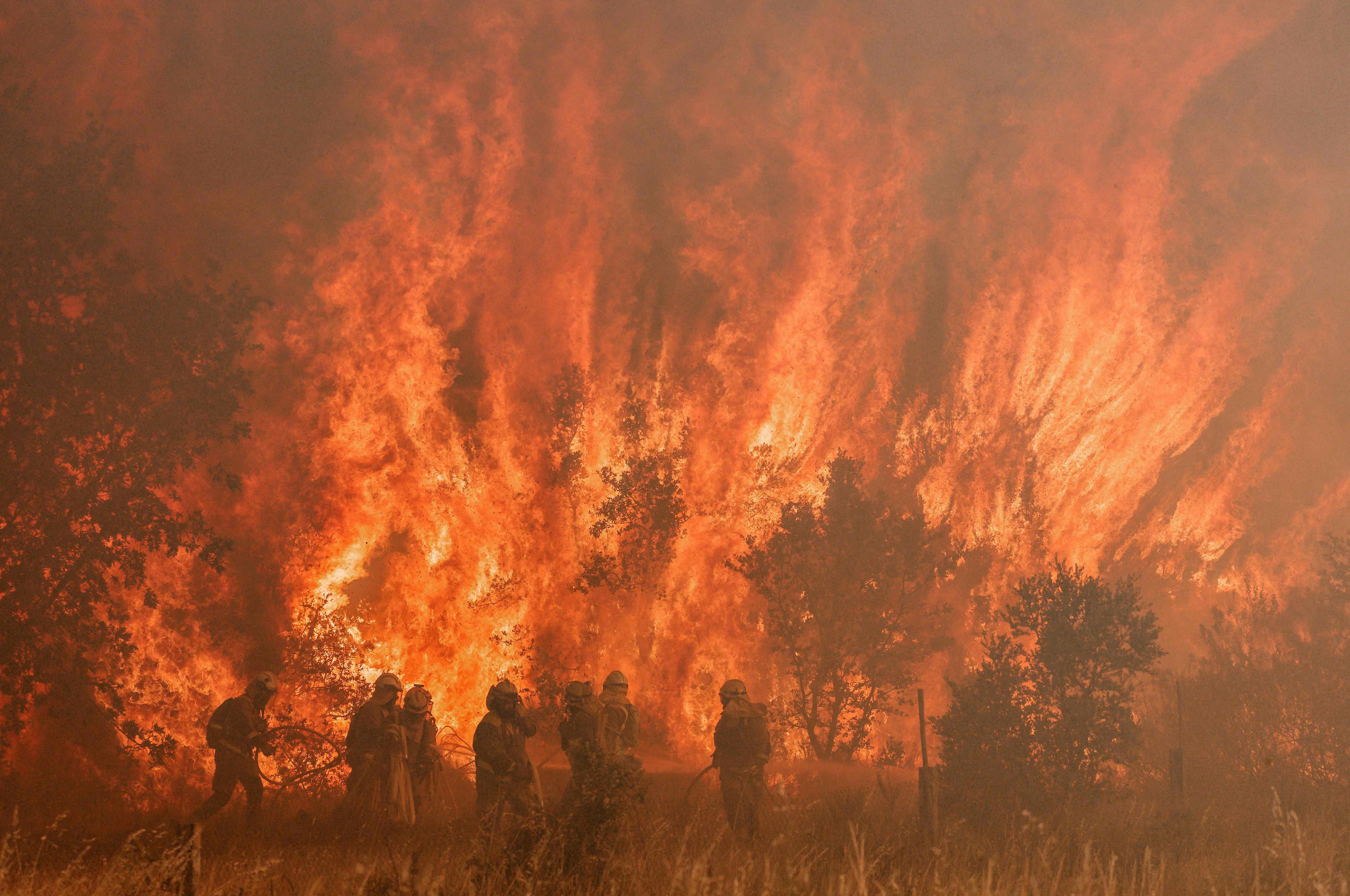‘No credible pathway in place’ to curb global warming at 1.5C as nations fail to act, warns UN
Under current policies the world is on track for 2.8 degrees of global heating by the end of the century

There is “no credible” pathway in place to rein in global temperature rise to 1.5C degrees, the United Nations warned today, adding that only “root and branch” transformation can save the planet from disaster.
The latest dismal assessment of the state of the climate crisis, comes with just a little over a week to go until Cop27 in Egypt.
“Under current policies, the world is headed for 2.8 degrees of global heating by the end of the century,” said UN Secretary-General, António Guterres, outlining the findings of the annual Emissions Gap report. “In other words, we are headed for a global catastrophe.”
The last Cop26 in Glasgow had a key goal of “keeping 1.5 alive” but the latest findings pour cold water on achievements since then. “Progress since Cop26 in Glasgow has been woefully inadequate,” the report adds.
Among the Emissions Gap report’s other key findings are:
- Most G20 members have just started to act on new targets and so are expected to fall short of 2030 promises unless they work faster
- Current emission-reduction policies, without further strengthening, are tracking for a 2.8C temperature hike by 2100
- If all NDCs are met, plus net-zero commitments, temperature increase is projected at 1.8C. But this scenario is “not credible”, the report says
The yearly update offers an independent take on countries’ combined efforts to cut greenhouse gas emissions. The report, titled The Closing Window, doesn’t make for happy reading.
Despite a decision at Cop26 last November in Glasgow to make more drastic emissions cuts, called Nationally Determined Contributions (NDCs), very little has been done. NDCs submitted in the past year take less than 1 per cent off projected global emissions in 2030.

The slow progress means that the world is currently far overshooting the goals of the 2015 Paris Agreement, which saw nearly every country pledge to cut their carbon footprint in order to avoid the catastrophic impacts associated with climate change including more dangerous heatwaves, droughts, stronger storms and ice sheet collapse.
The Paris deal aimed to limit average global temperature rise to 1.5C, or at least “well below 2C”, to avert planetary breakdown.
“This report tells us in cold scientific terms what nature has been telling us, all year, through deadly floods, storms and raging fires: we have to stop filling our atmosphere with greenhouse gases, and stop doing it fast,” said Inger Andersen, executive director of the UN’s Environment Program.

“We had our chance to make incremental changes, but that time is over. Only a root-and-branch transformation of our economies and societies can save us from accelerating climate disaster.”
The report notes that while net-zero transformations are underway in many sectors, more needs to happen at a faster clip.
For electricity supply, the UN calls for leaning in to solar and wind power, the costs of which have fallen dramatically although they cautioned that more needed to be done to ensure all communities were getting equal access. The report also warned against “locking in” new fossil fuel-intensive infrastructure.
The private sector was called upon to cut food loss and waste, a significant source of emissions, use renewable energy and develop foods that have lower carbon footprints.

Food systems, the source of one-third of all emissions, would be improved by dietary changes, changes in production at the farm level and decarbonization of supply chains.
Buildings, a large chunk of global emissions, need to have “available technologies” fully applied, while industry and transport need more ambitious efforts to create zero-emission technology, and that which exists deployed at a faster rate.
The financial system must overcome “constraints” and come up with investments of at least $4-6 trillion a year to drive the shift to a low-carbon economy, a relatively small (1.5-2 per cent) share of total financial assets managed, but significant (20-28 per cent) in terms of additional annual resources needed, the report stated.
“Even if the transformation fails to fully bridge the 2030 emissions gap, every fraction of a degree matters,” it read.





Join our commenting forum
Join thought-provoking conversations, follow other Independent readers and see their replies
Comments